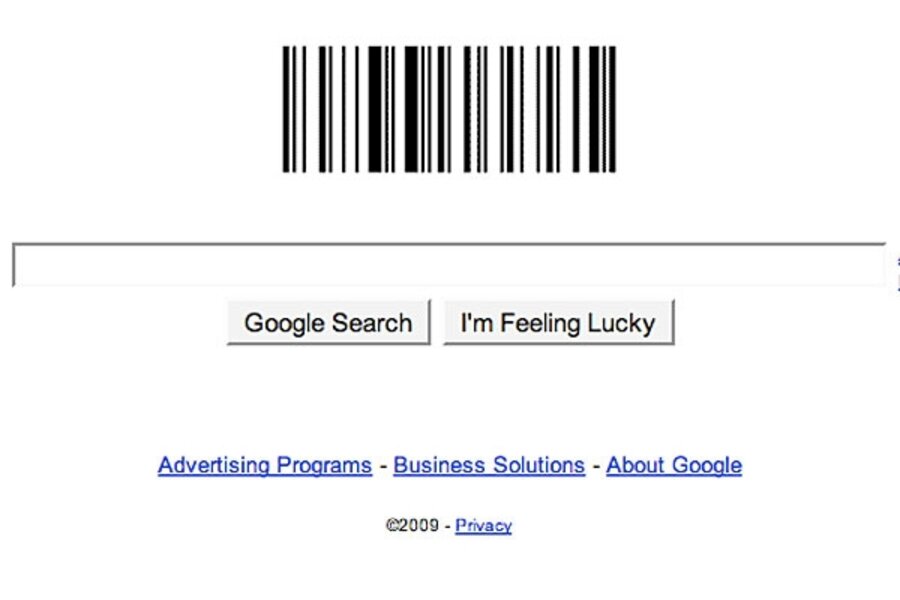Google bar code logo latest in 'doodle' line
Today, the usual Google logo has been replaced by the ubiquitous black-and-white bar code design to celebrate the 57th anniversary of the first bar code patent.
On October 7, 1952, inventors Norman Woodland and Bernard Silver were granted the first patent for their invention. The only difference between the bar code we know today and the one Woodland and Silver invented was that it was comprised of a series of concentric circles, not the 59 black-and-white vertical lines synonymous with the current design.
Earlier this year, on June 26, the bar code celebrated its 35th birthday. In 1974, a scanner in a Marsh supermarket in Troy, Ohio, met the simple black-and-white striped bar code design tacked onto a 10-piece pack of Juicy fruit gum. Now, more than 10 billion bar codes are scanned in 25 industries and in places including airports, hospitals, and shipping centers, according to Motorola.
TechCrunch reports that the Google logo bar code spells out "Google" using Code 128, which they describe as "a standard way of encoding ASCII character strings (ie. A-Z, a-z, 0-9, etc.) into a bar code."
Last week, on October 2, Google replaced its "G" with a drawing of activist Mahatma Gandhi, to commemorate what would've been his 140th birthday. In September, Google paid homage to HG Wells, author of War of the Worlds, by adding crop circles and UFOs to its logo.
–
Are you on Twitter? We are. Follow us @CSMHorizonsBlog.





